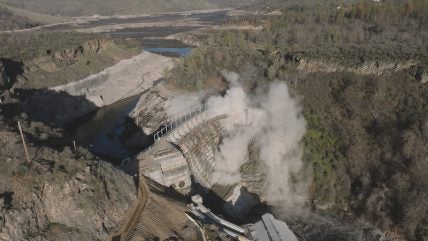
The Klamath River Renewal Corporation (KRRC) is proceeding with the removal of the Copco No. 1 Dam, the second of four to be removed as a part of the Klamath dam removal project. Following successful test blasting at the beginning of March 2024, deconstruction is underway of the dam that was constructed in 1918 for the sole purpose of hydroelectric power generation. The dam has blocked fish passage for over 100 years and is expected to be fully removed by the end of August 2024.
“We are excited to get to work,” said Mark Bransom, CEO of KRRC. “The dam is fully exposed and can be safely disassembled.”
Part of a cooperative effort between the States of California and Oregon, local governments, Tribal nations, dam owner PacifiCorp, irrigators, and several conservation and fishing groups, the Klamath River Renewal Corporation is a private, independent nonprofit organisation formed by signatories of the amended Klamath Hydroelectric Settlement Agreement, and tasked with overseeing the safe removal of the four dams and the river restoration process.
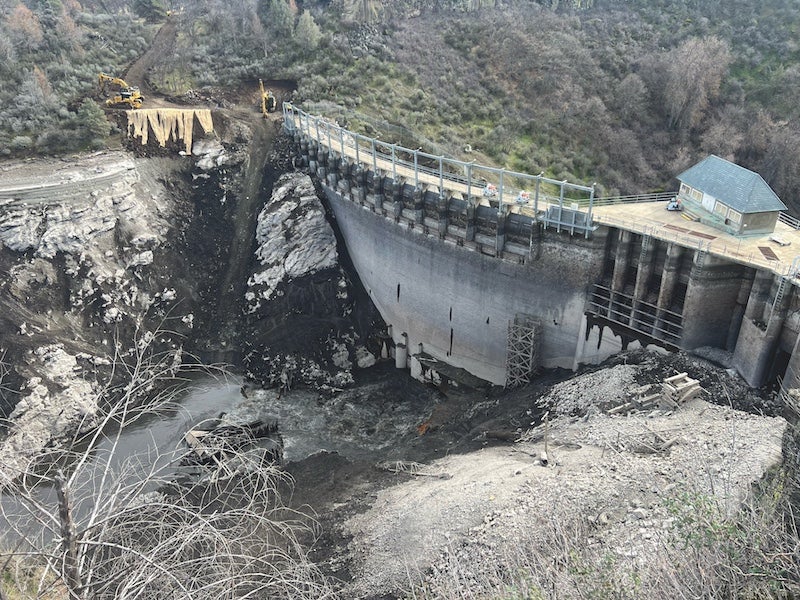
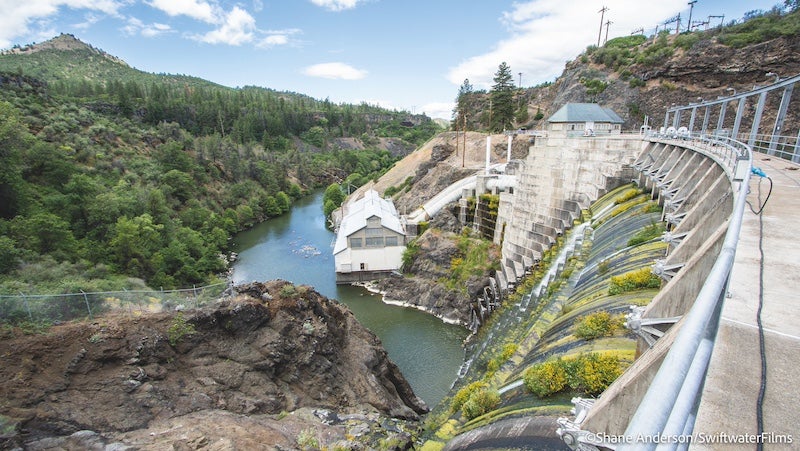
Dam removal to restore the Klamath river
Copco No. 2 was the first dam to be removed last year. Removal of the structure was completed in September 2023, and crews then spent two months taking out the remaining diversion infrastructure, grading the river channel, and performing erosion control which helped to prepare the river canyon for consistent river flows – the likes of which it hasn’t seen for almost 100 years.
Due to its small stature, location, and lack of reservoir, Copco No 2 was chosen as the first dam to be removed. Although significantly smaller than the other dams slated for removal, it still had a significant impact on the river. Completed in 1925, it was located below Copco No. 1 in a steep river canyon and was a diversion dam that funnelled the river’s flows out of the canyon, into a tunnel system that sent water to the Copco No. 2 powerhouse, essentially dewatering the 1.7-mile-long canyon. Without the river’s presence in the canyon trees had grown in the riverbed which, when exposed to consistent river flows, would have died and created a hazard for future recreationists. These were removed in September 2023 in collaboration with local tribes.
“Seeing the Klamath River flow through this canyon after being diverted for nearly a century is inspiring,” Laura Hazlett, COO of KRRC said at the time. “It makes me excited for everything else that is to come with the removal of the other three dams.”
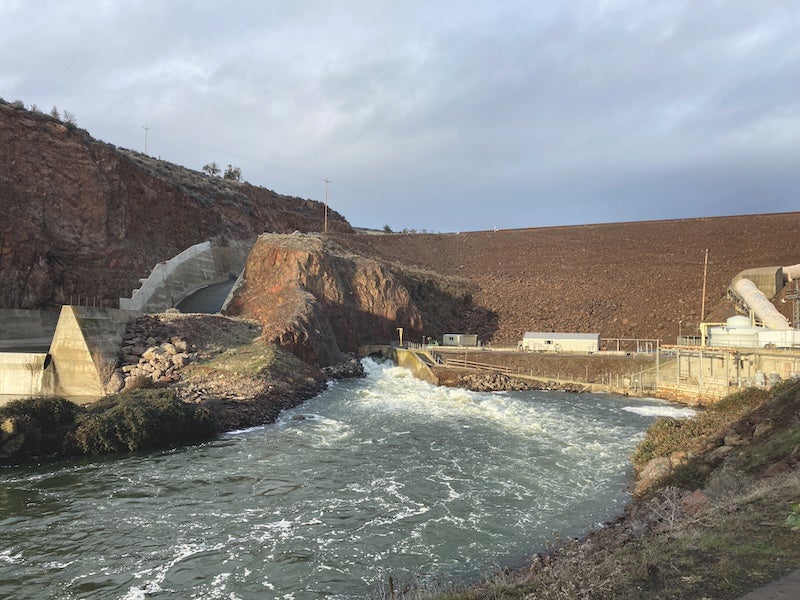
Reservoir drawdown
The remaining three dams, Copco No. 1, Iron Gate, and JC Boyle created reservoirs that needed to be drawn down before removal could begin. The initial phase of drawdown was recently concluded in February 2024 and shortly thereafter FERC approved an advancement in the schedule, allowing for removal of Copco No. 1 ahead of the other remaining dams.
With the reservoirs emptied, the Klamath River now winds its way through the former reservoir footprints, cutting though a century of accumulated sediment and finding its historical path. Extensive testing of the sediment that had accumulated behind the dams revealed that it is predominantly dead algae and is not a concern for human health.
“Seeing the river re-emerge is inspiring,” KRCC’s Mark Bransom said. “The Klamath is now reconnected for the first time in a century. While we are in the very earliest stages of restoring this important waterway, we can envision a bright future for what was once the third most productive salmon bearing river on the West Coast of the lower 48 US states.”
As the reservoir footprints began to recede, restoration crews swiftly went to work sowing millions of seeds from scores of native plants. While the waters have drained and the Klamath River has returned to baseline flows, the reservoirs have the potential to partially refill due to spring run-off. Replanting the 2200 acres of exposed reservoir area is being carried out in collaboration with the Yurok Tribe and is a key part of the plan to stabilise the soil and control erosion as the river re-establishes itself. This restoration work will continue for several years until vegetation is successfully established and water clarity has returned to baseline conditions.
During the entire drawdown process, which is expected to take several months, around five million cubic yards of sediment is expected to go downstream, causing water quality impacts for a limited duration. That is why this time of year was chosen as adult salmon are out to sea, and juvenile salmon generally overwinter in the tributaries and not the main stem of the river.“
Our native fish have evolved to survive many challenges, including periods when water quality is not ideal,” said Daniel Chase, Director of Fisheries, Aquatics and Design for Resource Environmental Solutions. “High levels of suspended sediment in the river are not unusual. Burn scars, mudslides and other events can contribute a great deal of sediment to the river and cause fish mortality, but the vast majority of fish respond by moving into tributaries or finding areas with better water quality. In this they can find ways to survive conditions and persist even when conditions look bad to us.”
As predicted in state and federal environmental reviews, there was still significant fish mortality in the reservoirs due to the extreme turbidity that accompanied drawdown.
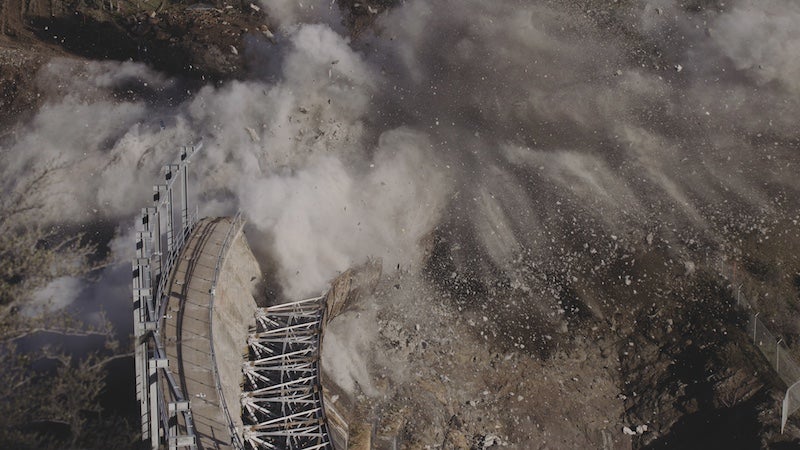
Dam deconstruction
Work on the deconstruction of Iron Gate and JC Boyle, which are clay core earthen dams, is expected to begin during May 2024, depending on precipitation.
Deconstruction of the Copco No.1 Dam, which will be performed through a repetitive cycle of drilling, blasting, and chipping, was able to begin before the spring runoff period concluded because it is a concrete arch dam. So, should the Klamath River experience a significant flow spring event, water could safely pass over the partially removed concrete dam and it would remain securely in place. The Copco No. 1 Dam removal plan was specifically designed to allow for this safe flow passing, should it occur.
Removal of Copco No. 1, Iron Gate, and JC Boyle Dams is expected to be completed in time for the Fall run of Chinook salmon later this year.






